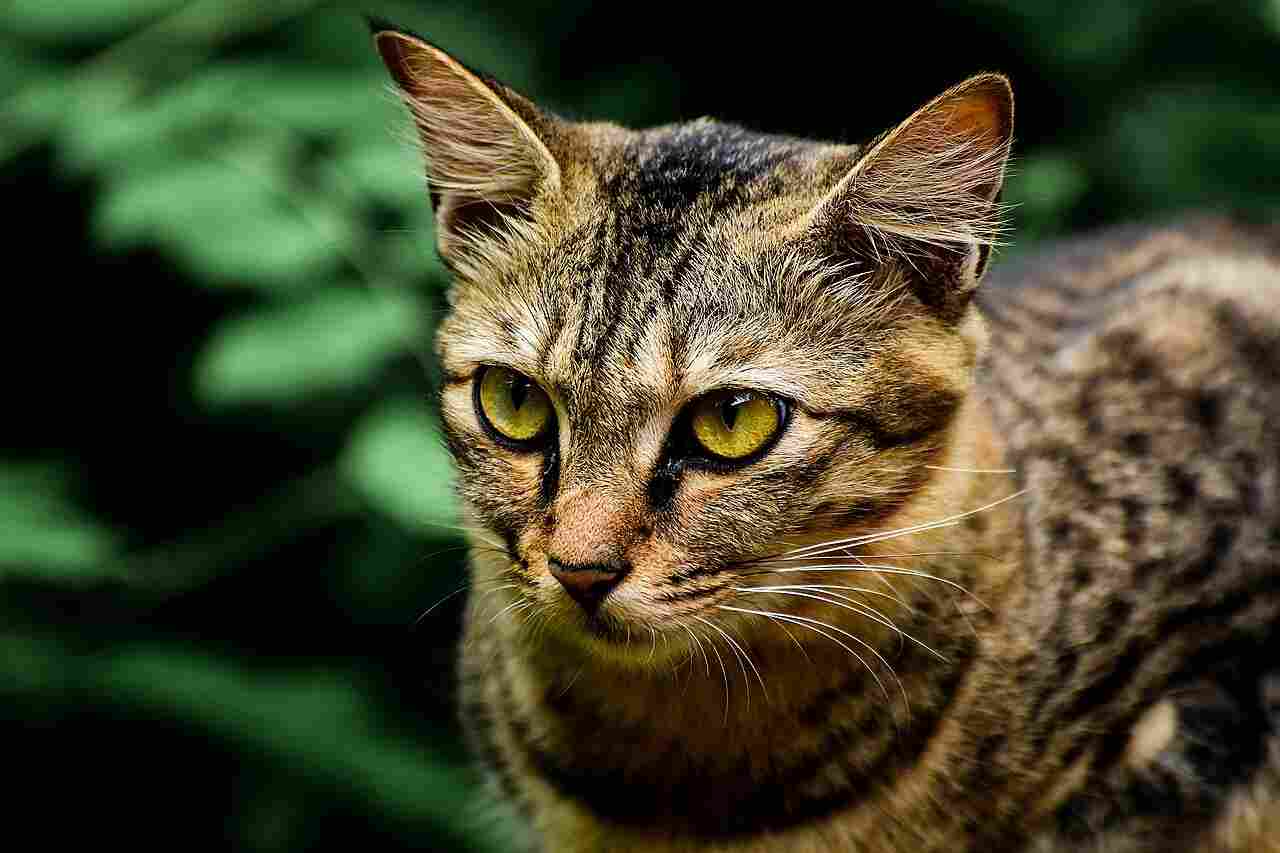Wildcat Vs Domestic Cat Size, Weight, Ecological Comparison
A wildcat, such as the African, Asiatic, or European species, will typically prevail in a fight with a domestic cat due to its higher level of aggressiveness and superior predatory adaptations. Wildcats have evolved to be more aggressive and skilled hunters, allowing them to overpower domestic cats in physical confrontations.
Their predatory instincts and behaviors give them an advantage in terms of size, weight, and overall strength.
Reasons Why a Wildcat Will Win a Domestic Cat in a Fight/Physical Confrontation
I). Higher Level of Aggressiveness
Wildcats, such as the European, African, and Asiatic species, possess a higher level of aggressiveness compared to domestic cats. This aggression stems from their evolutionary adaptations as apex predators in their respective habitats.
Wildcats have honed their hunting skills over generations, making them formidable opponents in a fight or physical confrontation. Their aggressive nature gives them an advantage over domestic cats, allowing them to assert dominance and overpower their counterparts.
II). Superior Predatory Adaptations (Behavioral and Physical)
In addition to their heightened aggressiveness, wildcats possess superior predatory adaptations that further contribute to their advantage in a fight. These adaptations encompass both behavioral and physical aspects. Wildcats exhibit advanced hunting techniques, such as stealthy stalking, pouncing, and efficient killing methods. Their muscular bodies, sharp claws, and powerful jaws enable them to subdue prey effectively.
Furthermore, wildcats have evolved to be more agile and swift, allowing them to outmaneuver their opponents in combat. Their keen senses, including exceptional hearing and night vision, provide them with a tactical advantage. These predatory adaptations, both behavioral and physical, give wildcats the upper hand in a fight or physical confrontation with domestic cats.
Therefore, the higher level of aggressiveness and superior predatory adaptations of wildcats make them formidable opponents in a fight or physical confrontation with domestic cats.

* European Wildcat Vs Domestic Cat Size, Weight, Taxonomy
a). Taxonomic Classification
The European wildcat (Felis silvestris) and domestic cat (Felis catus) belong to the same genus, Felis, and are closely related. They share a common ancestry and can interbreed, producing hybrid offspring. However, despite their genetic similarities, there are distinct differences between these two feline species.

b). Appearance
When it comes to appearance, the European wildcat and domestic cat exhibit noticeable variations. The European wildcat has a dense coat with a grayish-brown color and distinct stripes on its body and tail. In contrast, domestic cats come in a wide range of coat colors and patterns, including tabby, calico, and solid colors.
Their fur can be short or long, depending on the breed. While both species have sharp retractable claws, the European wildcat’s claws tend to be longer and more robust.
c). Size and Weight Comparison
In terms of size and weight, the European wildcat is generally larger and heavier than the average domestic cat. European wildcats typically measure around 60-90 cm (24-35 inches) in length, excluding the tail, and weigh between 5-8 kg (11-18 lbs). Domestic cats, on the other hand, vary in size depending on the breed, but they generally range from 45-60 cm (18-24 inches) in length and weigh between 3-6 kg (7-13 lbs).
d). Who Will Win in a Fight Between Them
In a fight between a European wildcat and a domestic cat, the European wildcat is likely to have the upper hand. Its larger size, stronger physique, and predatory instincts give it an advantage in physical confrontations. However, it’s important to note that individual factors such as age, health, and experience can also influence the outcome of such encounters.
e). Key Differences and Similarities
Apart from size and appearance, there are other notable differences and similarities between European wildcats and domestic cats. European wildcats are generally more intelligent and have a higher level of instinctual hunting skills. They primarily inhabit forested areas and are less likely to interact with humans.
Domestic cats, on the other hand, have been selectively bred for various traits and have adapted to living alongside humans. While both species can pose a threat to small animals, European wildcats are not considered dangerous to humans unless provoked. Domestic cats, on the other hand, may exhibit aggressive behavior if they feel threatened or cornered. Finally, both groups are characterized by viviparous reproduction.

* African Wildcat Vs Domestic Cat Size, Weight, Taxonomy
a). Taxonomic Classification
The African wildcat (Felis lybica) and domestic cat (Felis catus) belong to the same genus, Felis, and are closely related. They share a common ancestry and can interbreed, producing hybrid offspring. However, despite their genetic similarities, there are distinct differences between these two feline species.
b). Appearance
When it comes to appearance, the African wildcat and domestic cat exhibit noticeable variations. The African wildcat has a sandy or tawny-colored coat with faint stripes on its body and tail, providing excellent camouflage in its natural habitat.
Domestic cats, on the other hand, come in a wide range of coat colors and patterns, including tabby, calico, and solid colors. Their fur can be short or long, depending on the breed. While both species have sharp retractable claws, the African wildcat’s claws tend to be longer and more robust.
c). Size and Weight Comparison
In terms of size and weight, the African wildcat is generally similar in size to the average domestic cat. African wildcats typically measure around 45-60 cm (18-24 inches) in length, excluding the tail, and weigh between 3-6 kg (7-13 lbs). Domestic cats, as mentioned earlier, also vary in size depending on the breed, but they generally fall within the same range.
d). Who Will Win in a Fight Between Them
In a fight between an African wildcat and a domestic cat, the African wildcat is likely to have the advantage. Its natural instincts as a predator, combined with its agility and strength, give it an edge in physical confrontations. However, it’s important to note that individual factors such as age, health, and experience can also influence the outcome of such encounters.
e). Key Differences and Similarities
Apart from size and appearance, there are other notable differences and similarities between African wildcats and domestic cats. African wildcats are highly intelligent and have a keen sense of hunting skills. They primarily inhabit savannah grasslands, and woodland areas, and are less likely to interact with humans. Domestic cats, on the other hand, have been selectively bred for various traits and have adapted to living alongside humans.
While both species can pose a threat to small animals, African wildcats are not considered dangerous to humans unless provoked. Domestic cats, on the other hand, may exhibit aggressive behavior if they feel threatened or cornered.

Conclusion
In conclusion, this article has explored the size, weight, and taxonomy of the African wildcat and domestic cat. We have discussed their taxonomic classification, appearance, size and weight comparison, and the potential outcome of a fight between them. While the African wildcat may have the advantage in a physical confrontation, individual factors can influence the outcome.
Additionally, we have highlighted the key differences and similarities between these feline species, including their intelligence, habitat, and interaction with humans. Overall, understanding these distinctions enhances our appreciation for the unique characteristics of both the African wildcat and domestic cat.




